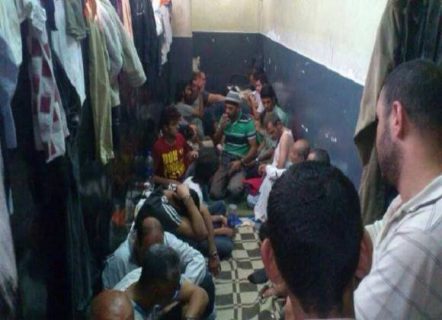The prominent leader of the Muslim Brotherhood, Dr. Essam el-Erian, died at the age of 66 in the notorious Scorpion Prison.
Local Egyptian media reported that Essam el-Erian died after suffering a heart attack inside his prison cell in Tora Prison in the suburb of Maadi. For his part, Essam el-Erian’s lawyer told the BBC that the authorities informed him that the death was natural, explaining that he and el-Erian’s family had not visited him for about six months after the police stopped visits to prisons as a precaution to combat the coronavirus.
The death of Essam el-Erian caused an uproar and a swift reaction on social media. Politicians and activists mourned him, calling for mercy and accusing the Egyptian authorities and security of intentionally ending his life through deliberate medical negligence and inhuman conditions of detention.
El-Erian’s death also reminded observers of the conditions of detainees in Scorpion Prison, who face slow killing in the absence of any information about them as a result of the ban on visits, which is considered retaliation against political opponents.
Essam el-Erian
Essam el-Din Mohamed Hussein el-Erian, born April 28, 1954, in the city of Nahia, Imbaba district, Giza Governorate, was in charge of the political bureau of the Muslim Brotherhood in Egypt. El-Erian held the position of Assistant Secretary-General of the Egyptian Medical Syndicate. He was elected to parliament on several sessions and was the youngest MP to be elected at the age of 28. El-Erian participated in student work during his university studies. After the Brotherhood established its political arm, the Freedom and Justice Party, he was elected vice president.
Authorities arrested el-Erian in 2013 after the military coup against the late President Mohamed Morsi. Courts issued several life sentences against him, including cases of communicating with Hamas, Qalioub events, and events of the Great Sea Street. He also received a sentence in the case of “breaking up the Rab’a sit-in Al-Adawiya.”
Willful killing
The death of Essam el-Erian came a day before the seventh anniversary of the massacre of the Rab’a sit-in dispersal, and activists explained that he had hepatitis and did not receive any treatment throughout his imprisonment. Others praised el-Erian’s steadfast position in confronting the authorities who imprisoned him in cases and trials described as politicised, following the military coup against the first elected civilian president in Egypt’s history. The pioneers of social networking sites also shared a video clip of him during one of the court sessions. He talked about dozens of detainees who died protracted deaths in prisons due to the absence of health care.
El-Erian gave an example in his speech to the judge, confirming that he had contracted hepatitis C inside the prison, and demanded that he be transferred to the Liver Institute to receive the necessary treatment. Still, the prison administration informed him of the National Security’s refusal of his request.
Scorpion Prison
Last June, a leaked statement from inside the high-security Scorpion Prison revealed that more than 300 detainees in prison had been infected with COVID-19 without the prison administration or the prison authority taking any measures to treat or isolate them. The statement stressed that “the injured have not been isolated or provided with appropriate medical care, and of those who suffer, most have not been transferred to hospitals and intensive care rooms.”
El-Erian’s death comes as the Egyptian authorities continue to besiege detainees in Scorpion Prison and isolate them from the outside world through repressive measures. According to human rights organisations, the measures include preventing visits and a policy of mass starvation of more than 750 detainees in Scorpion Prison and physical and psychological abuse and malnutrition.
Detainees’ grave
Many human rights reports have said Scorpion Prison is the worst official detention facility in Egypt, starting with its design. The Ministry of Interior usually chooses the officers and police who are the worst in violating the detainees’ rights to be stationed in this prison. They carry out systematic and continuous campaigns of torture and gross medical neglect.
The prison consists of 320 cells divided into four horizontal wards that take the shape of the letter H. Each wing is wholly separated from the rest of the prison, once its armoured outer gate is closed, so prisoners cannot even communicate through the cells. Most of the cells are solitary. The detainee is isolated from the world for weeks without sunlight until an investigation or trial session saves them. The design of the prison resembles in its final form a scorpion if viewed from the top, which is a significant to its primary goal, to crush the detainees inside to death.
Visits are almost always prohibited as is outside food, treatment, books, newspapers, toiletries, paper and pens. The detainees do not see their families or lawyers for years, and there is no means of contacting the outside world.





Recent Comments